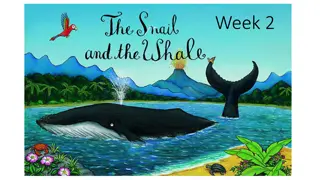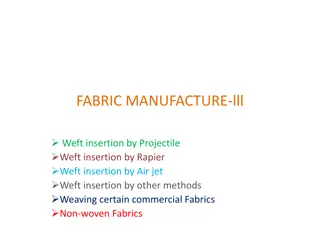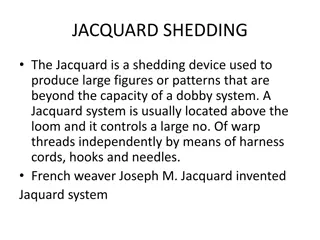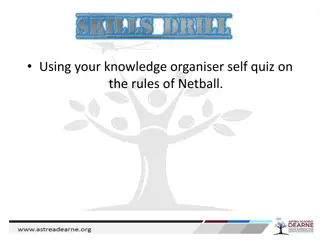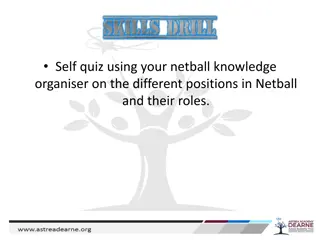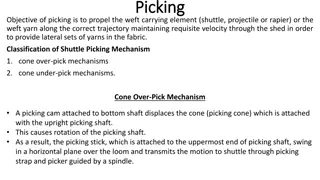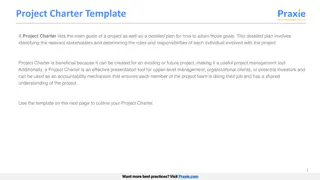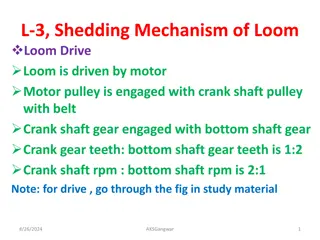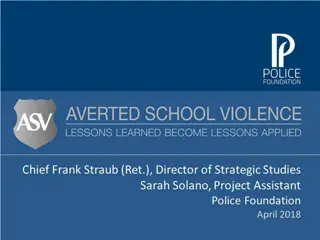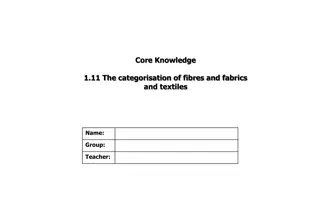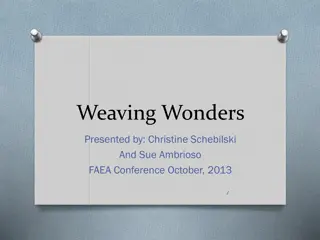Comprehensive Guide to Weaving Project Planning for Beginners
Explore the essential steps in weaving project planning, from choosing the right yarn and determining yarn sizes to understanding fiber properties and setts for common yarn styles. This comprehensive guide covers everything you need to know to kickstart your weaving journey like a pro.
Download Presentation

Please find below an Image/Link to download the presentation.
The content on the website is provided AS IS for your information and personal use only. It may not be sold, licensed, or shared on other websites without obtaining consent from the author.If you encounter any issues during the download, it is possible that the publisher has removed the file from their server.
You are allowed to download the files provided on this website for personal or commercial use, subject to the condition that they are used lawfully. All files are the property of their respective owners.
The content on the website is provided AS IS for your information and personal use only. It may not be sold, licensed, or shared on other websites without obtaining consent from the author.
E N D
Presentation Transcript
Project Planning for Weavers Sandi Petty Judy Mooers Jan. 18, 2010 1
Where do We Start What am I going to weave? What yarn should I use? How much yarn do I need? Sample or weave Evaluation and documentation 2
Sizes for Some Common Products Table Linens Napkins, casual: 12 x 12 Napkins, formal: 16 x 16 Placemats, casual: 12 x 18 Placemats, formal: 14 x 20 Kitchen Dish towels: 15 x 20 Dishcloths: 10 x 10 Pot holders: 7 x 7 Tea towels: 16 x 28 (small) Tea towels: 24 x 34 (large) Bathroom Washcloth: 14 x 14 Hand towel: 16 x 28 Bath towel: 22 x 24 (sm) Bath towel: 24 x 46 (med) Bath sheet: 36 x 70 Apparel Men s formal scarf: 12 x 45 Women s formal scarf: 10 x 48 Women s shawl: 24 x 72 Baby Blanket: 36 or 45 square 3
Choosing the Yarn The Fiber Softness Washability Durability The Yarn Strength (for warp) Grist Structure Size 4
Fiber Properties Wool Silk Linen Cotton Rayon Absorbency (water as fraction of weight) Good Good Excellent (evaporates readily) Excellent (evaporates slower than linen) Good Elasticity High (can stretch 30%) Good, but less than wool Very low Low Moderate Strength Weak (especially wet) Very strong (less when wet) Very strong (especially wet) Moderate (more when wet, mercerized stronger) Low Warmth Good Very Good Low Moderate Moderate Ease of Cleaning Avoid agitation Requires care Very good Good Moderate Weaver s Companion, pg. 25-27. 5
Setts for Some Common Yarn Styles Yarn Type Yards per Pound Plain Weave 2/2 Twill 20/2 Cotton 8400 24 - 30 32 - 36 10/2 Cotton 4200 24 - 28 30 - 32 8/2 Cotton 3000 16 - 20 24 - 30 5/2 Cotton 2100 15 - 18 20 3/2 Cotton 1260 10 - 12 15 20/1 Linen 6000 24 - 30 36 - 40 12/1 Linen 3600 22 - 25 30 - 32 20/2 Linen 3000 20 - 24 24 - 30 30/2 Silk 7500 30 - 32 36 - 45 12/2 Silk 3000 18 - 20 22 - 24 20/2 Wool 5600 20 - 24 30 - 36 12/2 Wool 3000 18 - 20 22 - 25 6/2 Wool 1600 10 - 12 12 - 15 6
Determining Sett (Ends per Inch or epi) Wind the warp around a ruler for one inch Firm, even, no stretch Fill the space with no overlap Count for wraps/inch = W (warp yarn diameter) Weft yarn diameter = F Calculate same as above Eileen Hallman 7
Determining Sett (Ends per Inch or epi) continued Number of threads in one repeat of the weave structure = T (plain weave (1,2)= 2; twill weave (1,2,3,4)= 4 Number of intersections in one repeat of the weave structure = I (plain weave = 2; twill weave = 2) Sett = (T x W x F) / ( T x F + I x W) Eileen Hallman 8
Formula for Sett S = (T x W)/ (T + I) S = sett T= number of ends in one repeat of the threading W = yarn diameter or wraps/inch I = number of interactions that the weft has with the yarn in one repeat Manual of Swedish Weaving 9
Warp Ends Calculation All Measurements in Inches Final Planned Width + Take-up (e.g., 10%) + Shrinkage (e.g. 10%) = Width on the loom x ends per inch (epi) = Warp ends +/- Adjustment for pattern Marcy Petrini 10
Warp Length Calculation All Numbers in Inches Final Length, include hem + Shrinkage (10%) = Length to weave + Fringe + Take-up (10%) = Length per article x number of articles = Warp length for weaving + Loom waste (18 to 27 ) = Total warp length (inches) Total warp length (yards) (divide by 36) Marcy Petrini 11
Amount of Yarn Needed Yarn for warp Total ends to wind x Length of each warp thread (yds) = Total warp needed (yards) = Total warp needed (pounds) (Divide by yards/pound) Yarn for weft Width on the loom (inches) x Beat (picks per inch) x Warp length for weaving = Total weft needed (inches) = Total weft needed in yards = Total weft needed in pounds Marci Petrini 12
Determining Yardage Count system for yardage Number of yards in a pound of a standard yarn Cotton and spun silk: 840 Linen, hemp, jute, ramie: 300 Worsted wool: 560 Woolen wool: 256 Yardage of a single= count x the standard Yardage of a plied yarn= yardage of single/# of plies Weaver s Companion, pg. 30 13
Sources for Yards per pound Yarn supplier Weavers Companion Handwoven Magazine yarn and suppliers page in any issue 14
Reed Size Table Reed # 1,0 1 1,2 2 2,3 3 4 6 3 6 9 12 15 18 24 7 3.5 7 10.5 14 17.5 21 28 8 4 8 12 16 20 24 32 9 4.5 9 13.5 18 22.5 27 36 10 5 10 15 20 25 30 40 11 5.5 11 16.5 22 27.5 33 44 12 6 12 18 24 30 36 48 14 7 14 21 28 35 42 56 15 7.5 15 22.5 30 37.5 45 60 16 8 16 24 32 40 48 64 18 9 18 27 36 45 54 72 20 10 20 30 40 50 60 80 Mary Black, pg. 659 15
Sampling Purpose: check sett, ppi, structure, shrinkage, flaws in the yarn, effects of color and texture, finishing techniques, and fabric hand. Make each sample at least 6-10 wide and long. Sample warp should be long enough to re-sley and re-tie (e.g., 2 yards) Record length and width On the loom Off the loom Finished 16
Project Notes Insert draft Name of project _________________________ Date completed _________________________ Approx. time req d _______________________ Yarns: Warp ___________Weft____________ Weave Structure ________________________ Source ________________________________ Warp length ___________________________ Warp width ____________________________ Sett __________________________________ PPI ___________________________________ Dimensions on loom _____________________ Dimensions off loom _____________________ Dimensions after finishing _________________ Weaver s Companion, pg. 41 17
References The Weaver s Companion, Interweave Press: Loveland, CO, 2001, pp. 25- 42. Right from the Start: Planning a Project , Marcy Petrini, http://www.weavespindye.org/pages/rfts-doc.html. Right from the Start: Planning a Project , Shuttle, Spindle & Dyepot, 122(Spring 2000),45-48 The Whole Truth about Setts , Eileen Hallman, Weavers, 40(1998), 18. Learning to Weave, Deborah Chandler, Interweave Press: Loveland, CO 1995, pp. 103-110. The Big Book of Weaving, Laila Lundell, Trafalgar Square: North Pomfret, VT, 2005, pp. 11, 88-93. The Key to Weaving (2nd revised edition), Mary Black,Macmillan Publishing Co.: New York, NY, 1980, pp. 14-16, 657- 662. 18





